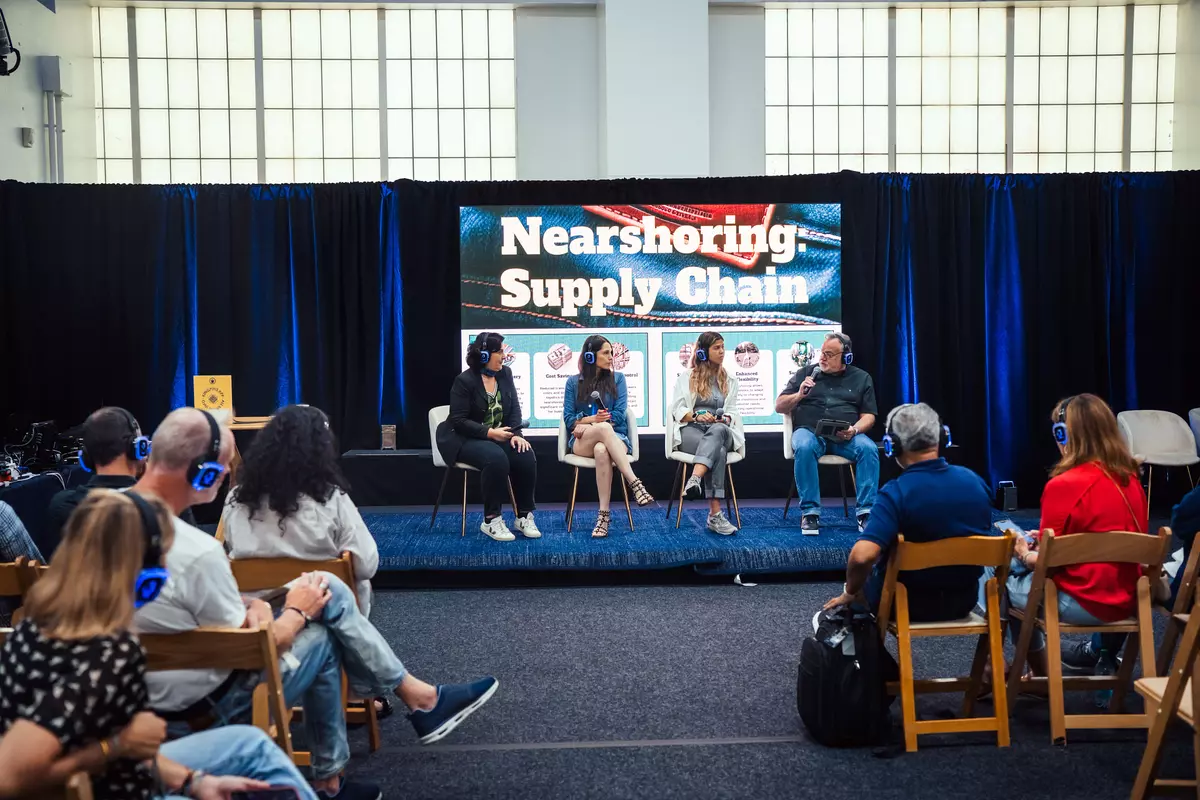Voice of the Expert: Robert Antoshak discusses Nearshoring
Robert was recently the moderator for an engaging panel at Kingpins New York Summer 2024 featuring fashion industry leaders who delved into the future of nearshoring and its impact on the denim industry on the topic of "ONENESS – Americas for the Americas: Exploring Nearshoring Opportunities" The panel featured a discussion between Adriana Morasco, Vice President of Apparel, Americas at The LYCRA Company; Anatt Finkler, Creative Director of Global Denim; and Pepa Silla, Sales Development Manager at Jeanologia.
We decided to sit down with Robert to get his thoughts on the future of Nearshoring and building more agile and sustainable supply chains across the Americas.
What is Nearshoring and why is it important especially in the denim industry?
Nearshoring involves moving production closer to the consumer market. This is important in the denim industry due to the need for shorter supply chains, risk management, and duty-free trade agreements like USMCA and CAFTA that make nearshoring more attractive and efficient.

What do you see as the most promising opportunities and challenges for nearshoring in the denim industry and the global fashion industry over the next five years?
There's a lot of change going on globally. A lot of the business moved in tandem because that was one solution, another solution for people was to say, you know what, we probably need to get a little more diversification in the supply chains. One element of a diversification strategy would be the near shore.
It's just a question of how fast the infrastructure builds up. There's a lot of investment that's gone in. And then, you know, flying under the radar is Mexico. Mexico has a sizable jeans business. But other countries are starting to step up. There's more activity coming out of Central America, and I think over the next five years I would look to see more sophisticated production.
What would you say are the main challenges that fabric suppliers, mills, brands, and retailers face when implementing nearshoring strategies, and how can these challenges be addressed?
The level of development in the near shoring community. There's no one place to just go like a clearinghouse and say I want to place orders. They’ve got to hunt through the countryside themselves and find manufacturers. And what they're discovering is, is it's taking a lot of time. It can be a slow process, and they're discovering that maybe not everything is made here.
You must have the demand in place to encourage the investment and again the needle trade is there. And again, it's growing. It's going to have to grow. No question about it and it must become more than just basic knits.
How does the Oneness initiative, featuring Global Denim Mexico, Jeanologia Miami, and The LYCRA Company, integrate nearshoring with sustainable practices in the denim industry?
The Oneness initiative provides a collaborative model that serves as a clearinghouse for people to say, 'Ohh I need denim that can do this.' One place to go to do that that's very powerful. And I think Oneness has a rule. I think they're ahead of the curve right now and have three quality companies involved that basically would take care of the entire query.
I was very flattered to be invited to moderate that panel, because these were smart people who came up with the idea.

Robert Antoshak (far right) moderating a panel discussion between Adriana Morasco – The LYCRA Company, Anatt Finkler - Global Denim, Pepa Silla – Jeanologia Miami. Photo captured at Basketball City by Miliron Studios Powered by Team Peter Stigter.
What are the key benefits of forging a unified supply chain across the Americas and how does this impact the efficiency and sustainability of denim production?
Right out of the box, it's more sustainable just because of the distances involved. And the fact that, you know, you'll typically be in textile production from the US and then apparel comes back from the region. But you know, often you're talking trucking or you're talking short shipping.
The next advantage is no questions for me to market. The other advantages are definitely along the lines of tariff breaks, incentives to use inputs from the region. So, you do have the benefit of encouraging more production regionally of product and for the net benefit for retailers.
Anything we didn’t ask that you would like to share?
My concern is that the industry eventually may find itself having heavy regulations put out if they don't figure out certain things. The problem with government regulation is you can't quite predict when it's going to happen, but it may happen, and it may not be next year or the year after. But at some point, you know something happens and something unforeseen and suddenly the industry has to make a quick turn."
Companies should invest in understanding regional business practices and conduct thorough risk management for successful nearshoring implementation.
Who or what inspired you to become who you are today, a leading advocate for nearshoring and sustainable practices?
My father got me into this business. It started as a summer job in between undergraduate and graduate school, and it turned into a full-time career. I just got kind of fell into it. I really enjoyed it. I love the big picture stuff, ended up going to Washington. The trade negotiations lobby all this stuff for the American textile industry.
What was your favorite outfit as a kid?
My basic outfit as a kid was a pair of jeans, usually Levi back then, probably a T-shirt and a pair of PF Flyers.
Contact our experts
Reach out to Ebru or Rita to learn how our innovative, durable, and sustainable fibers can transform your next denim collection.